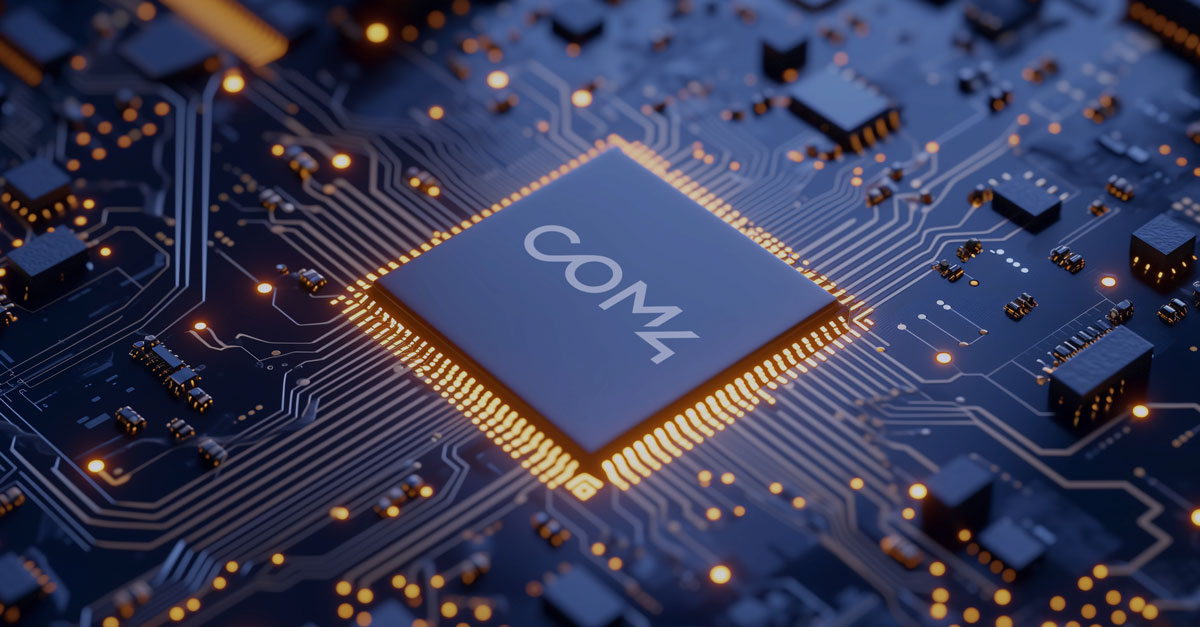M2M SIMs give sensors, equipment, and automated machines a secure way to stay online and share data. They support applications that depend on real time monitoring, operational insight, and continuous connectivity.
What is an M2M SIM Card?
An M2M SIM card is a specialised SIM used in connected devices that need long term, stable, and secure communication. It works on mobile networks like a normal SIM, but it is built for machine focused tasks. Consumer SIMs are made for phones that people replace often. M2M SIMs are created for devices that run for many years without physical access. They handle tough conditions such as vibration, dust, or changing temperatures. They also support remote management, so teams can update settings or check device health from a central system. This makes them suitable for sensors, medical devices, tracking units, and industrial equipment that operate for long periods in the field.
Differences Between M2M SIM Cards and Standard SIM Cards
M2M SIMs differ from standard SIMs in several important ways. The first difference is durability. M2M SIMs remain reliable in harsh environments and can stay inside the same device for many years. Consumer SIMs are not built for this type of long term use.
Security features are also stronger. M2M SIMs support private networks, traffic control, and encrypted communication. This reduces risk for industries that handle sensitive or operational data. A normal SIM does not offer the same level of protection.
Connectivity performance also sets them apart. M2M SIMs work across multiple networks and regions. They often come with global roaming agreements that keep devices online even when they cross borders. Many providers also include a management platform that lets organisations activate, pause, or diagnose SIMs remotely. Standard SIMs used in phones do not support these capabilities.
Scalability is another key difference. A company may manage hundreds or thousands of IoT devices across sites. M2M SIMs support group controls, automation, alerts, and usage monitoring. These features help businesses scale their IoT projects without adding manual work.
Types of M2M SIM Cards
M2M SIMs come in different formats. Each type fits specific devices, designs, and installation needs across industries.
2FF (Mini SIM)
The 2FF SIM is the largest physical format and is often used in older or larger devices that do not require compact internal design. It is simple to replace and works well in equipment that has a standard SIM slot.
Key points:
- Suitable for legacy devices
- Easy to handle and replace
- Works in equipment with larger SIM slots
3FF (Micro SIM)
The 3FF SIM is smaller than the Mini SIM and is commonly used in compact IoT hardware. It offers a balance between size and durability, which makes it reliable for small devices that still need manual SIM access.
Key points:
- Fits compact devices
- Good balance of size and handling
- Used widely in modern IoT hardware
4FF (Nano SIM)
The 4FF SIM is the smallest removable SIM format. It is designed for devices where space is limited and weight needs to be reduced. This format is often used in slim trackers, handheld devices, and portable IoT equipment.
Key points:
- Smallest removable SIM
- Ideal for thin or lightweight devices
- Common in wearable or portable IoT units
MFF2 (Embedded eSIM)
The MFF2 SIM is soldered directly onto the device’s circuit board. It cannot be removed. This format is popular in industrial sensors, medical devices, and equipment placed in harsh environments. Com4 also provides support for advanced embedded formats through its iSIM Evaluation Kit.
Key points:
- Fully embedded on the circuit board
- High durability for harsh environments
- Suitable for sealed or tamper resistant devices
iSIM (Integrated SIM)
The iSIM takes integration one step further by embedding the SIM functionality directly into the device’s main chipset, eliminating the need for a separate SIM component. This enables ultra compact, secure, and power efficient IoT devices. iSIM technology is ideal for large scale IoT deployments that demand space savings, cost efficiency, and advanced remote management.
Key points:
- Integrated within the device’s processor.
- Reduces space, cost, and power consumption.
- Offers high security and remote provisioning.
- Future proof solution for scalable IoT deployments.
How Do M2M SIM Cards Work?
An M2M SIM card connects a device to a mobile network so it can send and receive data. Once installed and activated, the SIM identifies the device on the network and establishes a secure communication channel. The device can then transmit information to cloud systems, local servers, or other machines. These SIMs also work with IoT platforms that monitor device activity, update configurations, and manage alerts. This makes it possible to maintain thousands of devices without visiting each location. The result is stable and efficient communication between machines in different regions.
Benefits of Using M2M SIM Cards
M2M SIM cards help devices stay connected, secure, and easy to manage. They are designed for long term use and support smooth communication across different locations. Here are some of the key benefits of using M2M SIM Cards:
- Remote Device Management: Teams can update and monitor devices from a central platform. This reduces travel and keeps equipment running.
- Strong Security: M2M SIMs support private networks and protected data paths. This helps keep business information safe.
- Global Connectivity: They work across multiple networks and countries. Devices stay online even when deployed in different regions.
- Long Lasting Design: These SIMs tolerate harsh conditions and long device lifecycles. They work well in sensors, meters, and industrial hardware.
- Easy Scaling: Organisations can manage large device fleets through one system. This makes growth easier without extra manual work.
 Applications and Use Cases of M2M SIMs
Applications and Use Cases of M2M SIMs
M2M SIMs support many sectors that rely on accurate data and stable communication. They help devices operate smarter, react faster, and reduce manual work.
Transportation and Logistics
Used for fleet tracking, telematics, and route planning. Com4’s work with Just Eat Norway shows the value of resilient connectivity in delivery operations.
Manufacturing and Industrial IoT
Sensors and machines use M2M SIMs to monitor equipment performance. Case studies such as Soundsensing demonstrate how connected monitoring helps detect faults early and reduce downtime.
Energy and Utilities
Smart grids, meters, and monitoring systems depend on continuous data. Gomero uses IoT communication to improve reliability in electric grid maintenance.
Healthcare and Medical Devices
M2M SIMs support connected medical equipment that monitors patients or sends health data. Real world examples include MedThings and Dignio, where stable connectivity supports patient safety and operational reliability.
Agriculture and Environmental Monitoring
Used in soil sensors, weather stations, and livestock trackers that operate in remote areas. In aquaculture, technologies such as those developed with Remora Robotics show how connectivity improves automation and monitoring.
Retail and Vending
Supports payment terminals, digital displays, and vending systems that need real time updates. For compact or sealed kiosks, embedded SIMs and the right connectivity plan can prevent downtime.
Construction and Site Monitoring
On building sites, devices must tolerate dust and vibration. Case work by Sensorita highlights how IoT connectivity can make site operations safer and simpler.
Choosing the Right M2M SIM Provider
Selecting the right M2M SIM provider is important because it affects how reliable your devices will be over time. Strong coverage, stable performance, and secure communication are essential for any IoT project. A suitable provider helps reduce downtime, supports long term growth, and makes it easier to manage devices across different locations.
Checklist to choose a provider:
- Check that the provider has strong coverage in the regions where your devices will operate. IoT projects often move across borders or remote areas, so reliable network availability is essential.
- Look for predictable pricing models. This helps you plan long term costs when managing large device fleets.
- Make sure the provider offers secure communication options. Features such as private routing and controlled data paths help protect sensitive information.
- Confirm that they offer an IoT platform that supports monitoring, alerts, and remote updates. This can reduce field work and keep devices healthy.
- Review their ability to support large scale deployments. IoT devices stay in service for many years, so the provider should be able to manage long lifecycles.
- Assess the quality of customer support. Quick and informed assistance can prevent delays when devices are part of critical operations.
- Choose a provider that allows flexibility to add new services or adjust settings as your project grows. IoT needs evolve, and the provider should adapt with you.
The Future of M2M SIM Technology
The future of M2M SIM technology is shaped by rapid IoT growth and the shift toward embedded formats. Global IoT connections are projected to reach about 38 billion by 2030 according to GSMA, and this growth will increase the need for secure and scalable connectivity. The integrated SIM market is also expected to expand from US$ 1.28 billion in 2025 to US$ 3.49 billion by 2032 based on research from Coherent Market Insights. These trends show a clear move toward remote provisioning, stronger security, and better coverage for large device fleets.
Key future trends:
- Higher adoption of eSIM and iSIM for long term deployments.
- Stronger focus on device security and remote provisioning.
- Wider coverage through cellular and satellite networks.
- Support for large scale IoT fleets with low maintenance needs.
- Increased demand for power efficient and long lasting connectivity.


.jpg?width=1200&height=628&name=SIMS%20(2).jpg)






